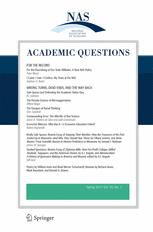Academia has been in the midst of a musical revolution for the last fifty years. This parallels that in other academic areas, particularly the other arts and humanities, where the ideology of postmodernism has taken hold. This ideology is simply the notion that in matters of judgment all is now in the eye of the beholder: individualism has triumphed, and there isn’t—and there can never again be—any communal agreement on the greater or lesser beauty or truthfulness of any object or idea over any other (the hard sciences are somewhat excluded from this generalization). In the musical arena this plays out very simply—courses are now offered in jazz, rock, mariachi, American song, world music of various locations, and the Western classical tradition. It is not suggested to students that any one of these might be more rewarding or possess more richness and depth than any other. All are equal and equally valid.
In The Classical Revolution: Thoughts on New Music in the 21st Century, John Borstlap offers an excellent and expansive view of where we now are in the larger world of contemporary art music (music in the tradition of Western classical music), both in America, and from his vantage point, in Europe. It is a rather radical view of the situation—in which “radical” paradoxically describes a possible return to moderation—a turn away from an ossified and bored transgressive bohemianism where anything goes. Bortslap being Dutch and trained in England, his examples tend toward the Continental, but they pertain just as well to the situation in the States. For while the scene in Europe is even worse than in the States, both suffer from the effects of modernism, especially its consequent, postmodernism.
We find ourselves in a post-postmodernist river, canoeing without a paddle. The problem in Europe was state support for the arts, while in America the retreat of serious music into the academy led to the creation of “academic music.” Both situations stretched the already tenuous relationship between the music-loving audience and new music to the breaking point. Bortslap suggests that a more salutary and fruitful landscape is emerging. But first let us see what he suggests has actually occurred over the last hundred years or so.
Bortslap’s approach is psychological, philosophical, and historical, for the questions pertaining to art music of the past hundred years cannot be torn out of the tapestry of related questions: What is the beautiful? Can one use the words “natural,” “spiritual,” or “meaning” without provoking derision? Do, or should, artists express their times, and thus the horrors of the twentieth century? Is there progress in artistic languages, and in music—is one irrelevant if one doesn’t speak in the twelve-tone language, as Pierre Boulez so famously stated? Can one still talk about music, or again, art more broadly, as providing an aesthetic, rather than just an entertaining, experience? Does the fate of this music symbolize, or is it a part of, the much broader war on the nature of what used to pass for our culture?
In setting the stage for his discussion Bortslap makes a number of useful observations. One is that the general classical musical culture has divided into numerous separate spheres. These include musical organizations that essentially perform a museum-like function, playing almost exclusively music of the past. Think of orchestras and operas, fine examples of which are the New York Philharmonic or the Metropolitan Opera, flagships of their respective worlds. While each occasionally programs the new work, this is usually done in an obligatory manner and rarely involves slating in the major positions. In other words, in orchestral programs the new work is usually the opener, and rarely the concerto. The spot reserved for the big piece, let’s say the symphony (Brahms, Mahler, etc.), is almost never given to the living composer. The new opera is almost always now driven by the libretto, then possible production values, and then the celebrity singer. The actual music is always of lesser importance. The fact that those pieces in the repertory are there first and foremost because of their musical content seems not to transfer to the new work.
The other part of the classical musical world is composed of organizations exclusively devoted to the new: Bang on the Can, Eighth Blackbird, the Kronos Quartet, etc., and, of course, festivals such as Darmstadt, held annually or whenever in wherever (the latter more of a historical European than American phenomenon).
Bortslap suggests that this is actually quite normal, if perverse, as the modernist enterprise involved the creation of a totally new art form—what he terms “sound art” or “sonic art”—which was based upon a fundamental break with the practices and normative aesthetic values of the past. He proposes that in the artistic realm this began with Dada and Marcel Duchamp, wherein a urinal becomes an art object, and grew to encompass work such as Warhol’s commercial art replications, Damien Hirst’s formaldehyde fish, and Andres Serrano’s Piss Christ. The analogue in music is to everything after Arnold Schoenberg’s Op. 23, which unleashed twelve-tone music on the world, or more to the point, negated all that tonality represented: order, hierarchy, memorability, formal clarity, shared style. (One might add that Schoenberg, very much aware of the disruption the new music represented, composed early twelve-tone pieces in established, thus, historical forms—gavotte, bourrée, etc.—a practice his European successors severely criticized and departed from post haste.) Bortslap dismisses the chance movement of John Cage as not even worth countering, because the music that resulted from this approach is so utterly inconsequential.
The other problem with sound art (or “organized sound,” as Edgard Varèse called it) is that it removes emotion from the musical equation. In so doing, it responded to numerous historical factors. These included the two World Wars and their devastating effect on man’s (particularly European man’s) psyche, which resulted in the desire to suppress emotions and our emotional nature, for wasn’t it precisely these emotions, unleashed, that produced such barbarities? But it also involved starting over again, from “ground zero,” with the devastation of Europe at the end of WWII, as it was so famously described. But this assumes not only that memory could be obliterated—and the objects of the past truly ignored—but that man’s fundamental nature could be recalibrated, a proposition mostly espoused by utopians, totalitarians, and fascists. Thus, the totalitarian comments of Boulez, Karlheinz Stockhausen, et al., regarding the inevitability of their musical methodologies as well as their belief in the complete irrelevance of any music that had come before them.
This lockstep approach to music, and the arts more generally, broke in America before it did in Europe. Bortslap is correct in associating this with the birth of minimalism and the serial apostasy undertaken by such composers as George Rochberg, David Del Tredici, and numerous others. These composers fled the tyranny of the twelve-tone method for many reasons, including the desire to express a wider arc of emotion, a greater capacity for human expressiveness; the desire (explicit with Rochberg) to reconnect with history, and thus humanity; and the recognition that the arts should not try to best the sciences or the scientific approach, but rather that music provides a unique way of helping us understand ourselves in the world.
There are occasional missteps, such as when Bortslap veers off into the realms of architecture, European philosophy, Jung, or cultural relativism. One sometimes has the sense of ideas being overworked a bit or repeated without enough development. Yet this is done in the interest of widening the context and is somewhat useful, because Bortslap looks at the relationship among politics, historical facts, philosophical conceptions of meaning and emotion, all in their relationship to music, meaning, and the transcendental. Not surprisingly, Bortslap finds that while some sound art can be interesting and intriguing, it rarely has deep emotive meaning and almost never reaches the transcendental. In other words, sound art has a strong relationship to kitsch.
In Bortslap’s view, this is largely due to the abandonment of tonality. Like Fred Lerdahl, Ray Jackendoff, and others, he sees humans as being programmed for some version of tonality. Bortslap doesn’t define this as a rigid system, but rather as a world defined by musical gravity, heard relationships, successions of pitches that create gestalts and thus swaths of meaning, hierarchical relationships, and, most important, a sense of structure or architectural coherence that allows for the feeling of journey, which implies almost by definition, a beginning, middle, and end. Bortslap suggests that this is, in some respects, predicated on the physical nature of sound, while it is understood that materials pertaining to music-making, be they instruments, scales, or rhythms, are man-made.
In arguing for a new classical revolution in music, or for supporting the one that already exists, Borstlap is arguing for a radical sense of moderation. One cannot obliterate history, so without slavishly following it, why not learn from it? Is it wrong to think of the composer’s task as building on the tradition of music (not sonic art)? Shouldn’t music contain emotion and heard meaning? Is it possible that the world of Schoenberg and his followers and fellow travelers is not the future but a dead-end, a period of historic note of little aesthetic value?
Finally, Borstlap lists a number of mostly European composers who fit his criteria of writing really good music, not sonic art. Their American counterparts, a few of whom he mentions, would include Rochberg, John Adams, William Bolcom, Aaron Jay Kernis, Paul Moravec, Robert Beaser, Del Tredici, John Harbison, Christopher Rouse, Daniel Asia, and John Corigliano for starters.













